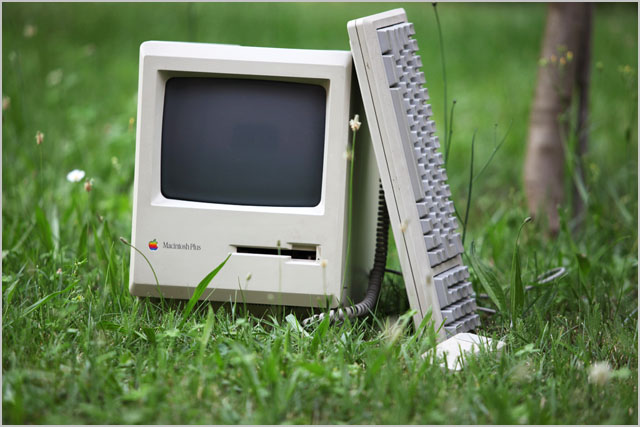blog It looks like there has finally been some action with regard to the Department of Defence’s long-running plans to pilot thin client desktops to replace its duplicated desktop PC infrastructure problem. iTNews reports that Thales has been chosen for a brief pilot of the technology:
“If the trial goes well, Thales will deliver some 90,000 devices as a managed service to the department by late 2014, five years after the project was conceived.”
Now all kudos to iTNews for breaking this news; it’s an important story and represents a major breakthrough in one of the longest-running desktop migration projects in Australia. As is well-known, Defence has been running multiple desktop systems for different levels of information classification for years — many staff actually have two PCs in their office, as hard as this is to believe.
But I have to correct the outlet on one thing: If Defence does succeed in rolling out thin clients by the beginning of 2015, it will have in fact been seven years since the project was first mooted; with Defence CIO first raising the issue as early as the beginning of 2008. If this doesn’t indicate the glacial speed at which Defence IT is upgraded then nothing will; seven years for a desktop replacment project is nothing short of ludicrous.
I can’t wait for the Federal Auditor-General’s report in 2016.
Image credit: Bruno Cordioli, Creative Commons


I hear they are still in the process of migrating all their custom apps to run on BeOS.
lol I am going to take this statement as a joke … if there is another definition of BeOS out there then let me know :)
http://en.wikipedia.org/wiki/BeOS
I am sure it was a joke too…but only JUST…
Update: I have received the following press release from Microsoft’s PR agency regarding this deployment:
———–
Thales Australia and partners to deliver Defence’s Next Generation Desktop
Prime contractor Thales Australia and a team of world class partners including Raytheon Trusted Computer Solutions (RTCS), Microsoft and Citrix, have signed a contract to deliver the Next Generation Desktop (NGD) project to the Department of Defence.
NGD will create tens of millions of dollars in Strategic Reform Program savings through the provision of a desktop environment that is simpler and less expensive to acquire and operate than current systems.
Savings will also be generated through the innovative re-use of existing Defence software and hardware, with the scalable NGD technology integrating seamlessly into the current Defence Information Environment infrastructure.
Due to its innovative use of thin client technology, NGD will provide significant benefits for end users. Instead of multiple terminals for different networks, users will benefit from de-cluttered workspaces with one computer, one keyboard, one screen and one mouse. RTCS’ Trusted Thin Client (TTC), a key component in the Cross Domain Solution (CDS), will enable simultaneous access to the Defence Restricted Network and Defence Secret Network on the same screen.
CDS software has already been implemented in HMAS Sydney, and is currently being implemented in an ANZAC Class frigate, as well as in the Deployable Local Area Network (DLAN) systems developed by Thales Australia for the Command and Intelligence Systems Support Office (CISSO)
The team will draw on local and international experience to deliver a low-risk deployment, beginning with a 500-user pilot before full implementation takes place across approximately 100,000 desktops.
Chris Jenkins, Thales Australia CEO, said: “NGD is a key element of ICT reform in the Department of Defence, and an important generator of savings. We will work closely with the customer and our partners to introduce this innovative technology into the Defence Information Environment in a streamlined manner, so users can benefit from its numerous advantages as quickly as possible.”
“Raytheon Trusted Computer Solutions is very pleased to be partnered with Thales Australia and others in delivering the Next Generation Desktop to the Australian Department of Defence,” stated Ed Hammersla, Chief Operating Officer. “As the leading provider of cross domain solutions in the United States, we are excited to see rapid adoption of our technology within the ‘five eyes’ nations.”
Michael Gration, Director of Public Sector, Microsoft Australia, said: “By taking advantage of this innovation in the Microsoft platform and the consolidating purchases of software and hardware products across its enterprise, the Department of Defence will be able to significantly enhance its entire IT operations with a clear technology roadmap. We look forward to collaborating with our partners to ensure a smooth path to realising the benefits of its investments on the Microsoft platform.”
Peter Brockhoff, Area Vice President Australia and New Zealand, Citrix, said: “The Next Generation Desktop project will provide the Department of Defence with an innovative, forward-looking solution to improve security, mobility and flexibility of its systems while simultaneously driving down the total cost of ownership of its desktop fleet. We look forward to piloting and then continuing the rollout of Citrix XenDesktop and XenApp to support the Department of Defence and the Next Generation Desktop initiative. Throughout the project Citrix will be working alongside our partners Thales and Microsoft to drive a truly pioneering implementation of Citrix technology.”
Comments are closed.